People have turned to epsom salt for hundreds of years to treat health ailments, to use as a beauty product, and even to take care of tasks around the home.
While this remedy is both affordable and natural, most people aren’t aware of all the ways Epsom salt can improve your life. Read on to discover it’s amazing uses and benefits.
What is Epsom Salt?
What we know as “Epsom salt” isn’t like the salt we use to season our foods. While that kind of salt consists of sodium chloride, Epsom salt is magnesium sulfate, a pure mineral compound.
Want naturally radiant skin? We’ve created a FREE guide to give you the best tips & tricks for natural skincare.
Click here to get your FREE copy of our Skincare Guide!
You might be wondering why Epsom salt is called a “salt” at all. That’s because it’s composed of small, colorless crystals. It resembles table salt, but its effects on the body are much different.
People have been using Epsom salt for hundreds of years, ever since the compound was discovered in Epsom, Surrey, England, at a bitter saline spring. The water was then boiled down to produce the salt. A plant anatomist named Nehemiah Grew patented the name all the way back in 1695 (1). [tweet_quote] Magnesium sulfate, or Epsom salt, can be used for beauty, health and even gardening! [/tweet_quote]
Epsom salt has a long history – and incredible variety – of uses ranging from treating health ailments to aesthetic benefits and even household and gardening applications.
You might hear this compound referred to as “Epsom salts.” But the plural form is actually a misnomer. While there are a huge variety of brands to choose from, they all come from the same compound.
The Dangers of Magnesium and Sulfate Deficiency

Magnesium, which plays a key role in regulating over 300 enzymes, is essential for physiological functions like regular heart rhythm, muscle contraction, and bone formation (2).
Unfortunately, a huge number of us are magnesium deficient. One study found that nearly 70 percent of American adults consumed less than the recommended daily allowance. Even scarier: 20 percent of people consumed less than half the RDA (3). [tweet_quote] Most Americans are magnesium deficient. Epsom salt baths can help. [/tweet_quote]
Sulfate also plays a key role in forming protein structures, converting food into energy, and maintaining proper insulin function (4). Just last year, in an extensive review of literature on atherosclerotic cardiovascular disease, researchers posited that cholesterol sulfate deficiency might be responsible (5). The lead researcher herself, Dr. Stephanie Seneff, recommends soaking in Epsom salt baths several times a week (6).
Epsom salt has been popular for centuries. The applications go far beyond health. Whether you’re looking to relieve constipation, exfoliate your skin, or even grow a better garden, Epsom salt is worth a look.
Here are the major uses and benefits divided into three categories: health, skin and beauty, and home and gardening.

Epsom Salt Health Benefits
Although Epsom salt has been a popular health remedy for centuries, it’s incredible how little scientific research has been done on soaking in Epsom salt baths to examine the benefits. There are studies out there connecting Epsom salt to maintaining a regular heart rhythm, treating eclampsia, and even mitigating stroke symptoms, but the vast majority of them focus on high doses delivered intravenously. Yikes.
Thankfully, one researcher, Dr. Rosemary Waring, conducted a study and proved that soaking in an Epsom salt bath increased magnesium and sulfate levels in the blood (7). [tweet_quote] Epsom salt baths are great for heart health because it increases magnesium and sulfate blood levels.[/tweet_quote]
We don’t know yet how this process works. Some researchers speculate Epsom salt is absorbed through the skin via osmosis. Others entertain the possibility that inhaling the warm Epsom water vapors is responsible for the effect. Or it could be something else entirely.
Whatever the case, Epsom salt offers you the following health benefits:
Lessens Pain and Inflammation

How does it work?
A meta-analysis published in the European Journal of Clinical Nutrition found an association between increased dietary magnesium and lower levels of C-reactive protein (CRP) (8). That matters because CRP is a known marker of inflammation (9).
Inflammation leads to swelling and pain. So if you can minimize it with something as simple as an Epsom salt bath, you’ll find it a bit easier to soothe your aching joints or recover from your last tough workout.
Improves Blood Sugar Control

Magnesium helps increase insulin sensitivity. The result: better blood sugar control and a reduced risk of diabetes.
One study of 63 type 2 diabetics divided the participants into two groups. One received magnesium supplements; the other didn’t. After 16 weeks, the magnesium group had significantly lower fasting glucose levels than the control group (10).
Epsom salt baths can help you get the magnesium intake you need to control your blood sugar. They’re no substitute for a healthy foundation – a good diet, sleep, exercise – but they’re a nice extra tool to have.
Relieves Constipation

A review of numerous studies concluded that Epsom salt has a potent laxative effect (12). Magnesium ions exert an “osmotic effect,” causing water to be retained in the intestines. This increases fluidity and results in a laxative action (13).
Many Epsom salts you buy will come with instructions how to take them internally for a laxative effect. Simply follow the instructions, mix the appropriate amount of salt and water, and drink it down. You should have a bowel movement some time within the next few hours.
If you continue having digestive issues regularly, you might have an autoimmune condition or need to heal a leaky gut. Talk to your doctor if the problems continue.
Reduces Stress

Without enough magnesium, it’s easier for your system to feel undue stress. Magnesium has a calming effect. One study found that supplementing with it was effective in treating major depression within a matter of weeks (15). [tweet_quote] Magnesium has a calming effect, making Epsom salt baths great for treating depression and providing stress relief.[/tweet_quote]
Researchers have also proven that stress itself causes the body to use magnesium less efficiently (16). It can become a vicious cycle. A magnesium deficiency makes us more likely to suffer the consequences of stress, and that degrades our ability to handle stress moving forward.
Soaking in Epsom salt baths can help. Not only do you get the increased magnesium intake as it’s absorbed through your skin, but the process itself – soaking in warm water – is relaxing and a great stress relief. Take some time for yourself once or twice a week (add essential oils if you want) and it’ll be easier for you to unwind.
Boosts Magnesium and Sulfate Levels
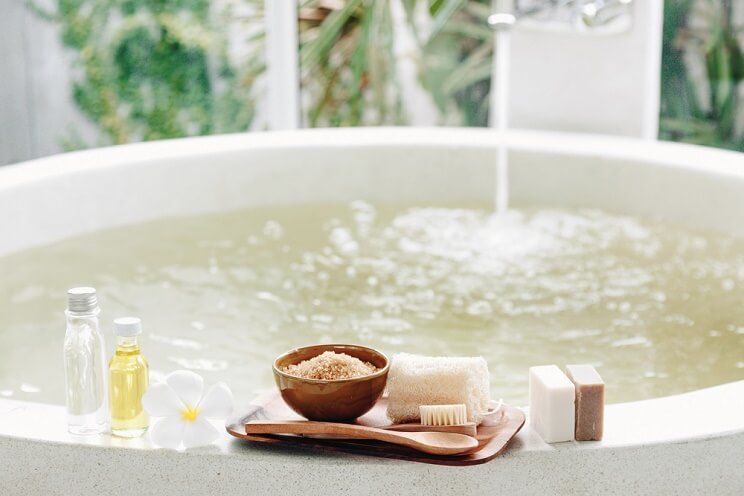
Low magnesium intake has been linked to everything ranging from type 2 diabetes and metabolic syndrome to hypertension and even heart disease (17).
If you’re seriously deficient in either of these minerals (magnesium is much more likely), you’ll probably need to adjust your diet and consider supplements.
But soaking in Epsom salt baths can also help, as both minerals make their way through your skin. At the very least, taking Epsom salt baths is relaxing and a nice preventative measure against mineral deficiencies – and the health issues they create.
Epsom Salt Skin and Beauty Benefits

- Body scrub. Mix ½ cup of Epsom salt with ¼ cup olive oil and scrub skin in the shower for healthy and smooth skin.
- Ease minor sunburns. Mix two tablespoons of Epsom salt per cup of cold water. Then soak a cotton washcloth in it and apply it to your skin. You could also put your mixture in a spray bottle and spritz it onto the burned areas.
- Exfoliating facial mask. Mix a tablespoon of Epsom salt, olive oil, and honey and apply onto your face. Leave it on for 10 minutes before rinsing away the facial mask and removing the impurities.
- Foot soak. Try mixing ½ cup of Epsom salt in warm water and soak your feet for 10-15 minutes to sooth aches, soften skin, and eliminate bad odor.
- Hair volumizer. Combine equal parts conditioner and Epsom salt. Warm the mixture in a pot, then apply it on your hair from the scalp to the ends. Leave the mix in for 20 minutes before rinsing it out. Try this once a week.
- Relieve itchy skin and bug bites. Mix two tablespoons of Epsom salt per cup of water. Put the mixture in a spray bottle and spritz it onto irritated areas.
Epsom Salt Home and Gardening Uses

- Clean tile and grout. Mix equal parts liquid dish detergent and Epsom salt. Scrub dirty floors and surfaces, then rinse off thoroughly.
- Prepare soil for fertility. Using Epsom salt can help your plants grow more vibrant and robust. Just add a tablespoon to soil directly beneath your new plants to boost their growth.
- Repel slugs. Just sprinkle some Epsom salt along your walkways, patios, or wherever you spot slugs to keep them away.
- Water house plants. Strengthen plants by watering them with diluted Epsom salt once a week. Dissolve two tablespoons of Epsom salt per gallon of water, and water like normal.
How to Take an Epsom Salt Bath
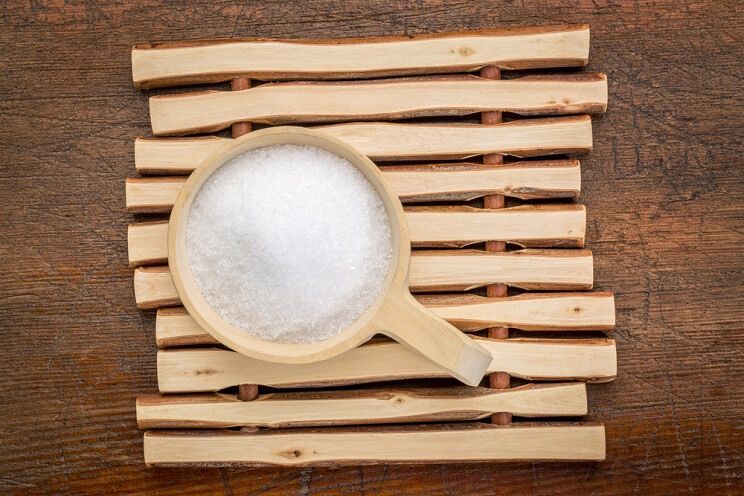
Start by drawing your bath. The water should be very warm, but not too hot – still comfortable to the touch. As the bath water is running, slowly pour in your Epsom salt near the faucet to help it dissolve.
Most Epsom salt companies will list the recommended amount for a standard-sized tub on their packages. It usually ranges somewhere between one and two cups. If you want to treat yourself, you can add some essential oils (lavender is great for relaxing) and/or a few drops of olive oil to help soften your skin. [tweet_quote] Try adding lavender oil and olive oil to your Epsom salt bath for the ultimate luxurious detox.[/tweet_quote]
Different people recommend different soaking times, but in the study linking Epsom salt baths to increased magnesium and sulfate levels, the participants bathed for 12 minutes. That’s a good baseline to shoot for, though you can soak much longer until the water cools.
You don’t have to take Epsom salt baths too often to see the benefits. Even once or twice a week can make a significant difference.
A word of warning: don’t use Epsom salt in whirlpools, hot tubs, or other bathtubs with jets before checking with the manufacturer first to make sure it’s okay.
Buying Epsom Salt
Finding Epsom salt is a breeze. It’s available at drug stores, grocery stores, health shops, and online.
Epsom salt is also extremely affordable. It’s commonly sold in one to two-pound bags, but you can find smaller sizes as well. As mentioned earlier, all varieties of Epsom salt come from the same magnesium sulfate compound.
Once you pick up some Epsom salt, store it at room temperature (away from heat and moisture to prevent it from becoming compacted). A cabinet in your bathroom is perfect for this.
Side Effects
Soaking in an Epsom salt bath or other topical uses (applying to the skin) is generally very safe.
Opting to take Epsom salt internally (to treat constipation, for instance) requires a bit more caution. While Epsom salt doesn’t contain questionable chemicals and artificial colors like most commercial laxatives do, be sure to follow the instructions and never take more than the label indicates. If you’re struggling with regular constipation, don’t take this stuff all the time. Talk to your doctor instead!
In certain situations, if you’re dehydrated, have an open wound or burn, or have heart issues, you’re best off avoiding Epsom salt. It should be okay for most women during pregnancy, but consult with your doctor first to be sure.
A Safe and Affordable Natural Remedy
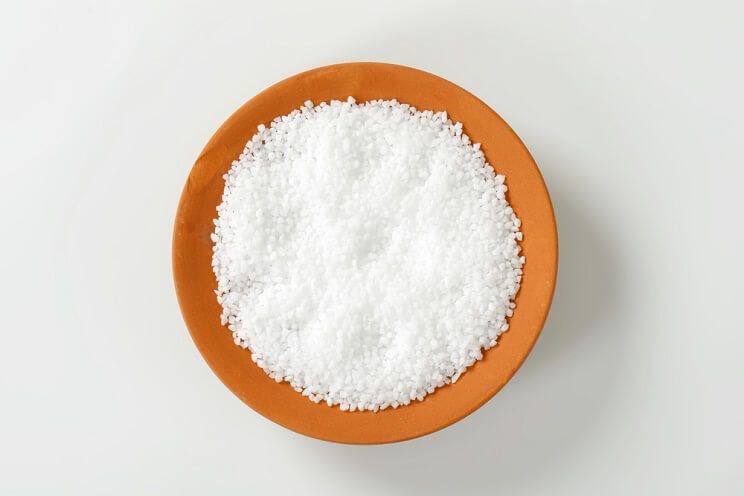
At the very least, it’s an affordable, safe way to make your baths feel better and boost your magnesium and sulfate levels. Avoiding those deficiencies is essential to vibrant health. Don’t be afraid to do your own experimenting and put the beauty and household benefits to the test yourself.
Do you use Epsom salt? If so, how do you use it? What benefits have you experienced? Leave a comment below and let us know!
(Read This Next: 2 Detox Bath Recipes to Naturally Flush Out Toxins)


 Prosciutto-Wrapped Avocado Egg
Prosciutto-Wrapped Avocado Egg
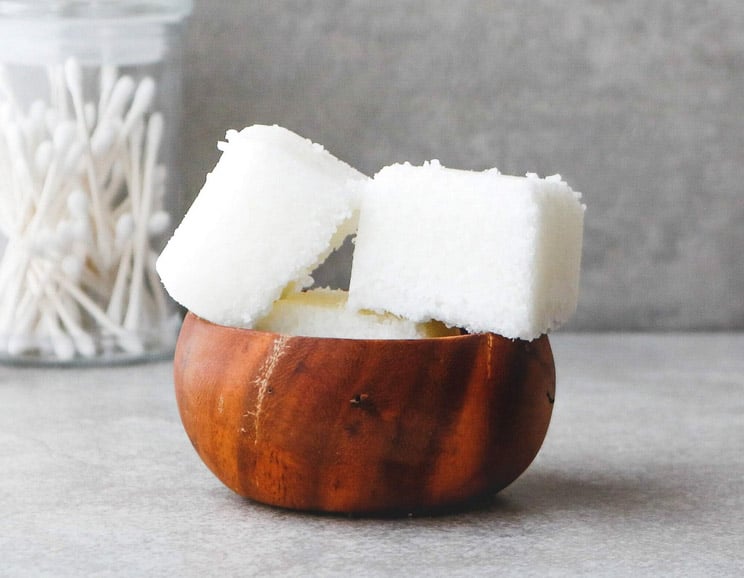




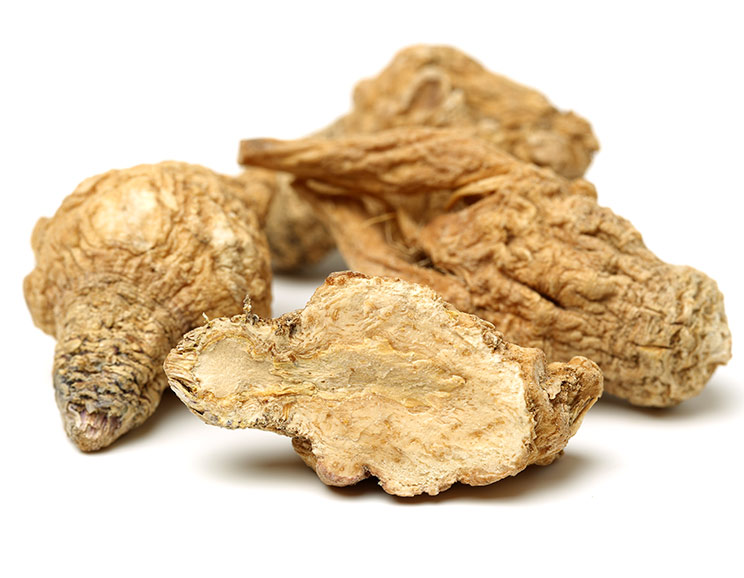
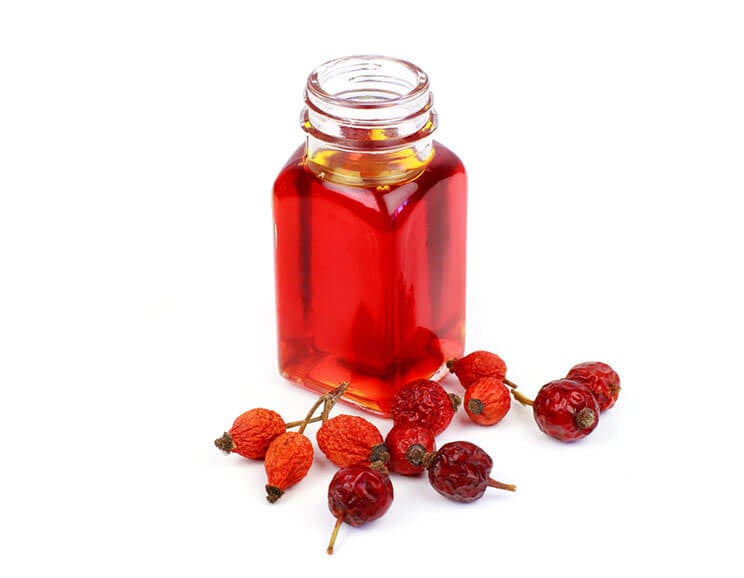
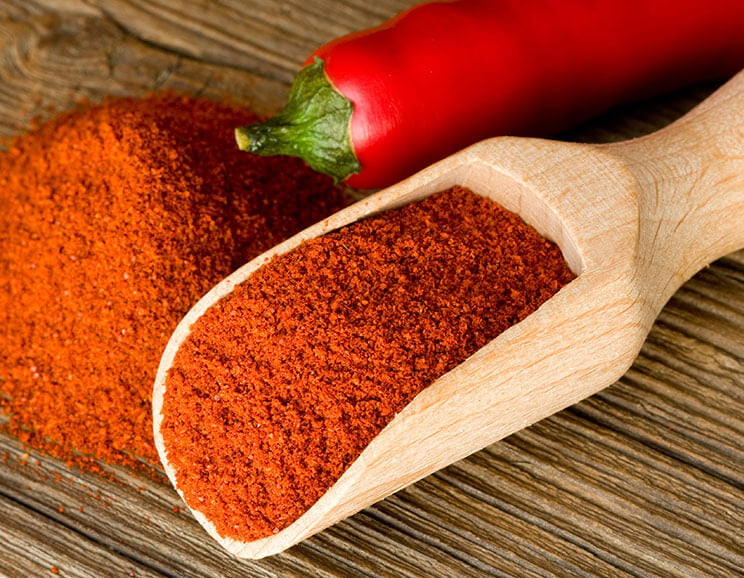

Show Comments